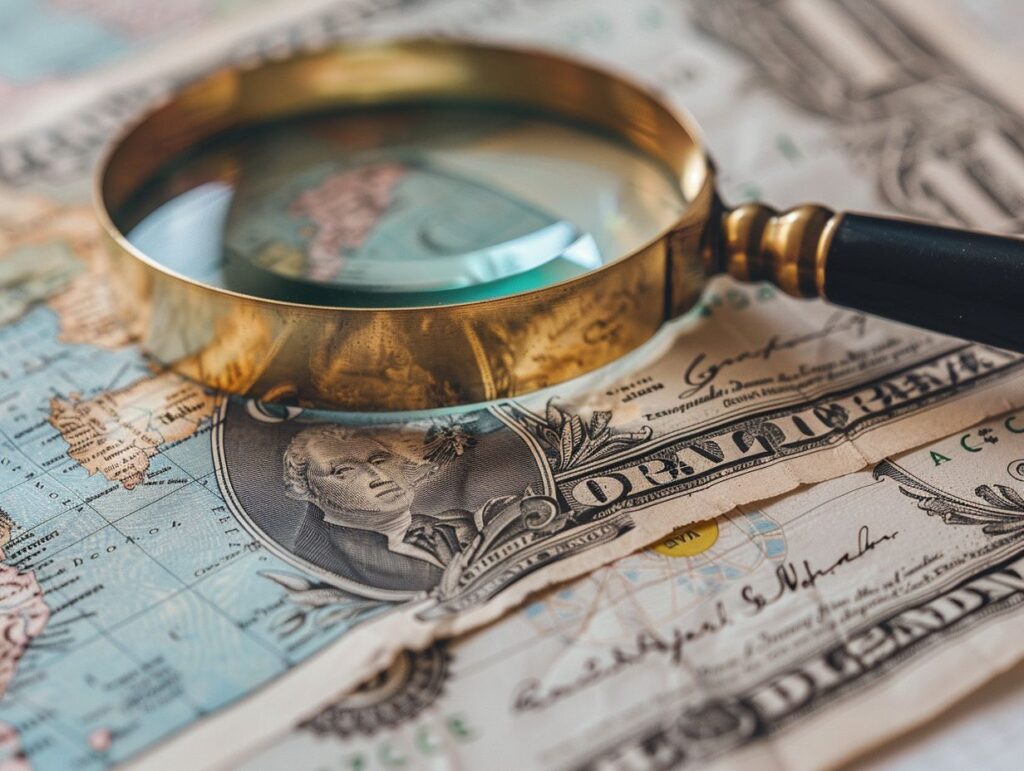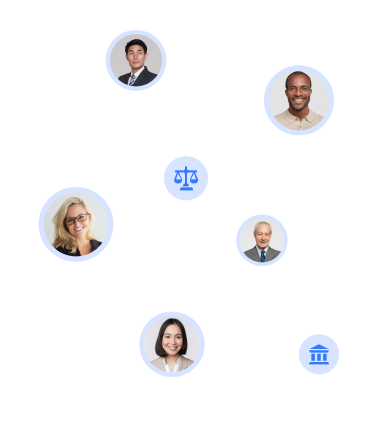Design protection is essential for creators and innovators in Florida, as it ensures their work is safeguarded from infringement.
We will explore the various types of designs that can be protected, the process for registering a design in Florida, and the benefits of doing so.
Learn about alternative methods for protecting designs without registration and what steps to take if you believe your design has been infringed. Discover how to safeguard your creative work effectively in Florida.
Key Takeaways:

- Registering a design in Florida provides legal protection, exclusive rights to use, and the ability to file lawsuits for infringement.
- If you cannot register your design, consider using copyright or trademark protection, and keeping detailed records of your design process.
- If you believe your design has been infringed, gather evidence, contact an IP attorney, and consider filing a lawsuit to protect your rights.
Understanding Design Protection in Florida
Having an understanding of design protection in Florida is important for businesses and individuals who want to protect their intellectual property. This involves making sure that your creative works, like trademarks, patents, and copyrights, are legally safeguarded under both state and federal laws.
What Types of Designs Can Be Protected?
Different types of designs can be protected in Florida to secure the ownership and exclusive rights of the creator. These designs encompass industrial, graphic, and architectural designs, all of which can be safeguarded through various forms of intellectual property protections like trademarks, patents, and copyrights.
1. Industrial Designs
Industrial designs pertain to the ornamental or aesthetic elements of a product, which are eligible for protection through patents and other types of intellectual property.
These designs cover a broad spectrum of products like furniture, electronics, vehicles, and fashion accessories. For instance, the sleek and minimalist design of a smartphone or the ergonomic shape of a chair can fall under the category of industrial designs.
When a designer or a company develops a unique and innovative design, they can apply for a patent to safeguard it against replication or imitation.
The procedure for acquiring a patent for an industrial design involves submitting detailed drawings or models of the design, accompanied by a description of its features and functionalities. Upon approval, a patent grants exclusive rights to the creator, enabling them to prevent others from producing, selling, or using the design without their authorization.
2. Graphic Designs
Graphic designs, such as logos, illustrations, and other visual content, can be protected through copyrights to ensure the creator’s rights to their creative works are preserved.
These protections guarantee that the original creator holds exclusive rights to reproduce, distribute, display, and adapt their designs. By registering copyrights with the US Copyright Office, creators establish legal documentation of ownership of the designs, facilitating enforcement against unauthorized use.
Securing copyright protection allows creators to retain control over the use and distribution of their designs, ultimately aiding in maintaining their brand identity and reputation.
It is crucial for both businesses and individuals to understand the significance of safeguarding their graphic designs through copyright registration to prevent infringement and unauthorized usage.
3. Architectural Designs
Architectural designs encompass both the structural and aesthetic aspects of buildings, and they can be safeguarded through a combination of patents and copyrights.
Patents are valuable for safeguarding the functional components of an architectural design, such as unique construction techniques or innovative building systems. Conversely, copyrights protect the artistic elements, such as ornamental details or sculptural characteristics.
To qualify for patent protection, the design must be new, not obvious, and practical. In contrast, copyright protection is automatically granted upon creation, granting exclusive rights to reproduce, distribute, and display the design. By obtaining these protections, architects can deter unauthorized replication, receive acknowledgment for their work, and potentially generate revenue through licensing agreements.
What is the Process for Registering a Design in Florida?
The process of registering a design in Florida consists of multiple steps to secure legal protection for the design under state and federal laws. This involves assessing eligibility, conducting a comprehensive search for similar designs, and preparing and submitting an application to the relevant trademarks office, like the US Patent and Trademarks Office (USPTO).
1. Determine Eligibility for Protection

- The first step in the process is to determine the eligibility for design protection. This involves evaluating whether the design meets specific legal criteria for protection under Florida’s intellectual property laws.
- Key factors in determining eligibility for protection include originality and non-obviousness. Originality entails the design being independently created and not derived from existing designs, while non-obviousness requires that the design is not a straightforward variation of prior designs. These criteria have varying applications across different types of designs, such as industrial designs, graphic designs, and fashion designs.
- Consulting with legal professionals can offer valuable insights into a design’s eligibility for protection and ensure that all legal requirements are satisfied.
2. Conduct a Search for Similar Designs
Performing a search for similar designs is an important step to ensure the uniqueness of a design and to avoid any infringement on existing registered designs.
By utilizing databases like those provided by the USPTO and other trademark offices, individuals can access a range of information to compare their design concept. This process entails entering specific search criteria related to key design elements, such as shapes, colors, and patterns.
The search results aid in identifying any designs that bear resemblance to the one under consideration, facilitating a comprehensive assessment of uniqueness. Investing the effort in conducting this search not only reduces the likelihood of legal conflicts but also instills confidence in the originality and marketability of the design.
3. Prepare and File an Application
The process of preparing and submitting a trademark application involves gathering all necessary documentation and sending it to the relevant trademarks office, such as the USPTO.
The essential documents typically needed for a trademark application are:
- A completed application form
- A clear image or representation of the trademark
- A specimen displaying the trademark in use
- The filing fee
It is crucial to verify the accuracy of all provided information and confirm that the documents align with the specific requirements of the trademarks office. Legal professionals like trademark attorneys can offer valuable assistance in navigating the application process, ensuring all paperwork is correct, and improving the chances of a successful application.
What Are the Benefits of Registering a Design in Florida?
Registering a design in Florida offers various benefits, such as legal protection, exclusive rights to utilize the design, and the option to initiate legal proceedings for infringement. These advantages help guarantee that your intellectual property remains protected from unauthorized use.
1. Legal Protection
Legal protection ensures that a design is recognized as intellectual property, providing the owner with ownership and the exclusive right to use and control its use.
Registered designs enjoy a significant scope of legal protection under Florida’s intellectual property laws, granting owners the power to prevent others from using, reproducing, or selling their designs without permission.
This protection serves as a crucial tool in safeguarding the uniqueness and commercial value of the design. In case of infringement, the owner can take legal action to enforce their rights and seek remedies such as damages or injunctions. Florida’s robust intellectual property legal framework plays a pivotal role in upholding the rights and interests of design owners.
2. Exclusive Rights to Use the Design
The exclusive rights to use the design indicate that only the owner possesses the legal authority to utilize the design for commercial purposes, and this authority can be protected through trademarks and other legal means.
These exclusive rights come with various advantages, such as preventing competitors from replicating or mimicking the design without permission. This protection ensures that the owner can benefit from their unique creation without the threat of infringement. Holding exclusive rights also gives the owner the opportunity to license the design to others for a fee, extending their reach and potentially creating additional revenue streams.
Trademarks play a critical role in affirming these rights by offering legal acknowledgment and safeguarding against unauthorized use, reinforcing the design’s distinctiveness in the market.
3. Ability to File Lawsuits for Infringement
The option to file lawsuits for infringement is a significant advantage of registering a design. This allows legal action to be taken against unauthorized use.
Registering a design provides the legal authority to pursue different remedies when unauthorized copying occurs. These remedies may involve seeking financial compensation for incurred losses, securing an injunction to halt the infringing actions, and potentially advocating for the removal of counterfeit products.
A proficient legal team, which includes skilled attorneys specializing in intellectual property law, can be extremely beneficial in managing the intricacies of design infringement cases and guaranteeing effective protection of rights.
How Can You Protect Your Designs Without Registering?

Safeguarding designs without registration entails utilizing alternative strategies like copyright protection, trademark protection, and maintaining thorough documentation of the design process to establish ownership and originality.
1. Use Copyright Protection
Utilizing copyright protection for creative works can offer a level of legal protection even without formal registration.
Copyright protection gives creators exclusive rights to their original works, preventing others from reproducing, distributing, or displaying the works without permission. This safeguard applies to various forms of artistic expression, including literature, music, art, and software.
To ensure this protection, authors can attach the copyright symbol (©), the creation date, and their name to their works. While copyright protection is automatic upon creation, registering works with the US Copyright Office strengthens legal enforcement capabilities and provides documented evidence in case of infringement disputes.
It’s worth noting that copyright protection has its limitations, as it does not cover ideas or concepts, only the expression of those ideas.
2. Use Trademark Protection
Trademark protection is utilized to safeguard branding elements of a design, offering legal recognition and exclusive rights.
This legal recognition is essential to ensure that unique branding elements like logos, slogans, and product names are shielded from unauthorized use. To secure trademark protection, an individual typically needs to submit an application to the relevant trademarks office, specifying the elements to be protected.
The trademarks office will then assess the application to confirm that it meets the necessary criteria, including distinctiveness and non-generic qualities. Upon approval, the trademark owner obtains exclusive rights to use the protected elements in association with their goods or services, serving as a valuable tool for brand differentiation and market recognition.
3. Keep Detailed Records of Your Design Process
Maintaining detailed records of the design process is an important strategy for establishing ownership and safeguarding work without formal registration. This documentation can include project timelines, sketches, drafts, communication logs, and other materials that illustrate the evolution of creative work.
These records act as a reliable source of evidence in case of disputes regarding intellectual property. By demonstrating the development of ideas and the effort put into them, individuals can showcase the originality and rights to their designs.
Implementing protection measures like watermarking, copyrights, and non-disclosure agreements strengthens one’s position, deters unauthorized use, and adds extra layers of defense.
What Should You Do if You Believe Your Design Has Been Infringed?
If a design appears to have been infringed upon, it is important to promptly gather evidence of the infringement, reach out to an intellectual property attorney, and potentially explore the option of initiating a lawsuit to safeguard one’s rights.
1. Gather Evidence of Infringement
The initial step in protecting a design involves gathering evidence of infringement, which includes documenting instances of unauthorized use and collecting supporting materials.
Various types of evidence are crucial in these situations, such as screenshots showing unauthorized usage, dated sketches and drafts of the original design, communication records with the infringing party, and witness testimonies.
To thoroughly document infringement, it’s essential to maintain a detailed log of each instance, including dates, locations, and any relevant context. This documentation serves as a foundation for constructing a strong case when pursuing legal action or seeking resolution through other means. Without comprehensive evidence, it can be challenging to prove ownership and protect intellectual property rights effectively.
2. Contact an Intellectual Property Attorney
Seeking guidance from an intellectual property attorney, such as those at Jurado & Associates, P.A., is important to receive expert legal advice and assistance in safeguarding your design against infringement.
These attorneys specialize in intellectual property law and have the knowledge and experience to effectively handle issues concerning copyright, trademark, and patent law. By consulting with an attorney, you can gain insights into the most effective strategies for protecting your intellectual property rights and taking appropriate legal measures when necessary.
Attorneys like those at Jurado & Associates, P.A., play a crucial role in helping individuals and businesses navigate the intricate field of intellectual property law, ensuring that their creative work receives adequate protection.
3. Consider Filing a Lawsuit

Considering filing a lawsuit is a significant step in addressing design infringement, which can provide legal recourse and potential remedies for unauthorized use of your design.
A lawsuit for design infringement typically begins with consulting legal professionals who can assess the merits of your case and advise on the best course of action. Legal experts can help in determining if your design is protected under copyright or trademark laws.
If the infringement is proven, potential outcomes may include injunctions to stop further unauthorized use, monetary compensation for damages, and even the possibility of licensing agreements. Having a registered design can greatly strengthen your case in court, as it serves as concrete evidence of your ownership and protection of the design.
Frequently Asked Questions
What is the first step to protect my designs in Florida?
The first step to protecting your designs in Florida is to register for a design patent through the United States Patent and Trademark Office (USPTO).
Are there any specific requirements for obtaining a design patent in Florida?
Yes, your design must be new, original, and have a practical use or function in order to be eligible for a design patent in Florida. It must also not be obvious to someone with ordinary skill in the same field.
What is the advantage of obtaining a design patent in Florida?
Obtaining a design patent in Florida gives you the exclusive right to use, make, and sell your design for a period of 14 years, protecting it from any unauthorized use by competitors.
Can I still protect my designs in Florida if I don’t have a design patent?
Yes, you can also protect your designs in Florida through copyright or trademark laws. However, these forms of protection may not offer the same level of comprehensive protection as a design patent.
What is the process for registering a design patent in Florida?
The process for registering a design patent in Florida involves filing an application with the USPTO, including detailed drawings or photographs of your design and a description of its features. It is recommended to seek the assistance of a patent attorney to ensure the application is properly prepared and submitted.
Do I need to renew my design patent in Florida?
No, a design patent in Florida does not require renewal. Once it is granted, it is valid for 14 years from the date of filing.























Rate this article:
Average rating 0 / 5. Vote count: 0
No votes so far! Be the first to rate this post.
No Comments yet!